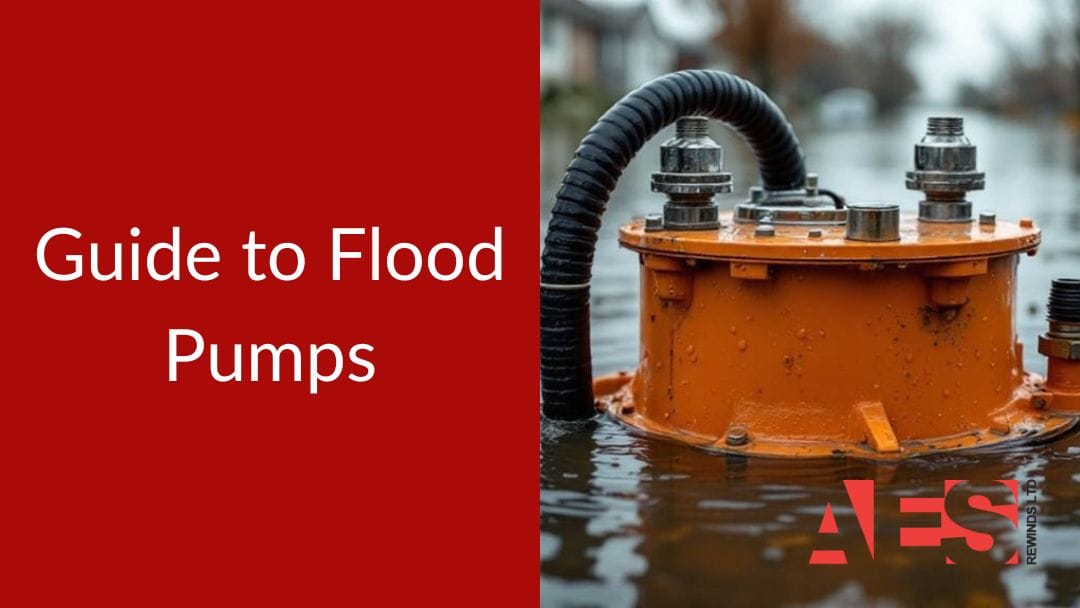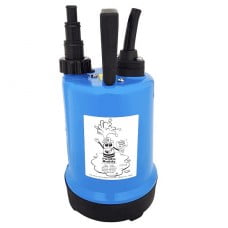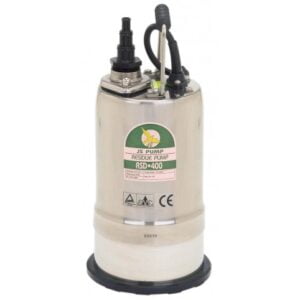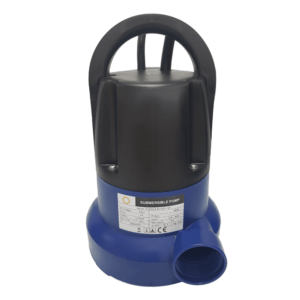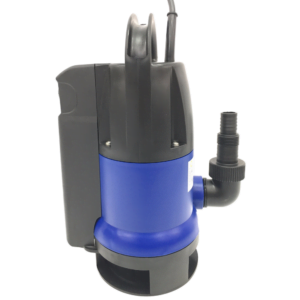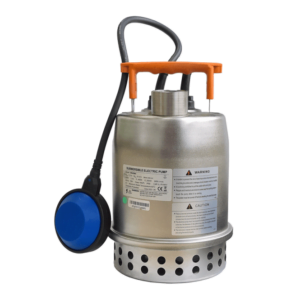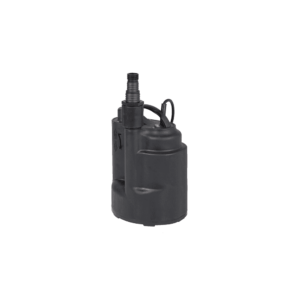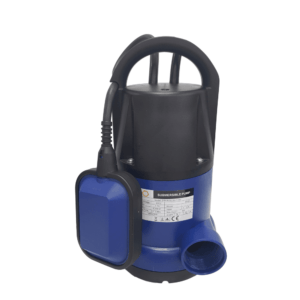You might not think about flood protection until water starts creeping towards your doorstep, but that’s exactly when it’s too late. With UK flood damage costing £1.3 billion annually and one in six properties at risk, flooding can hit anywhere, anytime. When 2024 broke records with £650 million in flood insurance claims, it became clear that choosing the wrong flood pump could leave you watching helplessly as water damages everything you’ve worked for.
Key Takeaways
- Match pump type to flood risks: Submersible pumps for deep water and basements, puddle pumps for surface water (pumping down to 1mm), sump pumps for permanent groundwater protection
- Choose appropriate flow rates: 160-250 LPM for typical residential emergencies, 300+ LPM for larger properties or commercial applications
- Consider head height requirements: 8-11m lift capacity handles most UK residential situations, higher for multi-storey properties
- Select automatic vs manual operation: Automatic pumps with float switches for unattended protection, manual pumps for budget-conscious emergency response
- Ensure UK compliance: Choose pumps from established UK suppliers with next-day delivery and proper electrical safety certifications
Why UK Homes Need Flood Pumps
The UK is now 10% wetter than it was 30 years ago, and five of the ten wettest years on record have occurred in the 21st century. With traditional flood defences under strain and extreme weather becoming the norm, your home is statistically more likely to be flooded than burgled.
Government flood defences can’t protect every property, leaving many homeowners vulnerable during flash floods, storm surges, and the increasingly common surface water flooding that overwhelms drainage systems. A reliable flood pump becomes your personal insurance policy – capable of removing thousands of litres per hour when every minute counts.
Whether you’re protecting a basement from groundwater seepage or clearing surface water from your driveway, having the right pump ready means acting fast to prevent thousands of pounds in damage while keeping your family safe.
Types of Flood Pumps
Understanding the three main types of flood pumps will help you choose the right tool for your specific flooding scenario. Each type serves different purposes and water removal situations.
Submersible Pumps
Submersible pumps are the workhorses of flood protection, designed to operate completely underwater with sealed motors that prevent damage while maintaining powerful pumping capabilities. These pumps work by being fully submerged rather than “sucking” water up through pipes, making them quick to deploy and highly reliable during emergencies.
Key advantages:
- Can be wired permanently for automatic activation
- Handle dirty flood water mixed with debris effectively
- Quieter operation as water provides natural sound insulation
- Available from leading UK brands like Tsurumi, Stream Pumps, and APP
Best for: Basement flooding, deep water situations, and permanent installation in sump pits.
Browse our complete range of drainage pumps to find the right submersible solution for your flood protection needs.
Puddle Pumps
Puddle pumps are specialized submersible pumps that excel at removing shallow water without requiring full submersion. They can pump water down to just 1mm depth without overheating, making them invaluable for emergency flood response and surface water management.
Key advantages:
- No chamber or excavation required – place directly on most surfaces
- Rapid deployment in flood response situations
- Flow rates up to 250 litres per minute for effective water removal
- Available in both manual and automatic versions
Best for: Surface flooding, emergency response, garages, patios, and construction site drainage.
For detailed guidance on selecting the right model, read our comprehensive puddle pump guide or browse our puddle pumps collection.
Recommended products
JS RSD 150 Puddle Buddy Low Level Residue Pumps
From £135.25JS RSD-400 Residue Puddle Pumps
From £231.85Puddle Buddy 100 Automatic Puddle Pump
£81.37 +VAT
Sump Pumps
Sump pumps provide permanent basement protection by automatically removing groundwater before it can flood your home’s lower levels. Installed in dedicated pits (sump basins), they activate automatically when water levels rise.
Note: If your flooding involves sewage or waste water, you’ll need specialized sewage pumps instead. Learn about the differences in our sewage pump vs sump pump guide.
Key advantages:
- Higher flow rates than puddle pumps for handling large volumes
- Permanent installation provides ongoing protection
- Can be integrated with perimeter drainage systems
- Available as complete packaged pump stations for easy installation
Best for: Ongoing basement protection, groundwater management, and properties prone to regular flooding.
Learn more in our detailed guide to sump pumps or explore our sump pumps range.
Recommended products
Sump Buddy
£72.73 +VATOreal CK Stainless Steel Sump Pumps
From £142.15Pentair Flotec Compac 150 & 200 Submersible (Sump) Pumps
From £214.60Drain Buddy 400 Automatic Sump Pump
£61.93 +VAT
Key Specifications to Consider
When selecting a flood pump, three critical specifications determine whether your pump can handle the job effectively during an emergency.
Flow Rate (Litres Per Minute)
Flow rate determines how quickly your pump can remove floodwater. For UK residential properties:
- 160-220 LPM: Emergency flood kits for small areas (garages, patios)
- 250+ LPM: Standard residential protection (basements, larger spaces)
- 300-800+ LPM: Commercial applications or severe flooding scenarios
Remember that higher flow rates aren’t always better – choose based on your actual needs to avoid unnecessary noise and energy consumption.
Head Height/Maximum Lift
Head height represents how high your pump can push water vertically. For UK homes:
- 8-11m lift: Handles most residential situations (basement to ground level)
- 15m+ lift: Required for taller buildings or long horizontal distances
- Consider pipe resistance: Add 1m of head for every 10m of horizontal piping
Always check your specific installation requirements, as pumping from a basement to an upstairs outlet requires significantly more lift capacity.
Automatic vs Manual Operation
Automatic pumps feature float switches that activate when water levels rise, providing hands-free protection ideal for:
- Unattended properties during holidays
- Hard-to-reach areas like lift shafts
- Overnight protection while you sleep
- Areas requiring constant monitoring
Learn more about how these work in our float switch guide.
Manual pumps require direct operation but offer:
- Lower purchase cost
- Complete user control
- Often pump to lower levels (down to 1mm vs 25-60mm for automatic)
- Suitable for emergency response situations
Choosing the Right Pump for Your Situation
Your specific flooding scenario determines which pump type will serve you best. Consider these three main applications when making your selection.
Emergency Flooding
For unexpected flood emergencies, you need pumps that can deploy quickly and work reliably when power supplies may be compromised.
Recommended solutions:
- Emergency flood kits: Complete packages with pump, hose, and fittings
- Puddle pumps: For rapid surface water removal (1mm minimum depth)
- Engine-driven pumps: When electrical power is unavailable
- 110V pumps: Safer option when working in wet conditions
UK suppliers like Flood Protection Solutions and Pump Express offer next-day delivery emergency kits specifically designed for rapid deployment during flood events.
Basement/Cellar Protection
Below-ground spaces require specialized pumping solutions due to confined spaces and potential groundwater issues.
Permanent solutions:
- Sump pumps in dedicated pits: Automatic activation when water levels rise
- Packaged pump stations: Complete systems with chambers for easy installation
- Perimeter drainage integration: Connect to existing foundation drainage
Not sure if you need permanent protection? Read our guide on do you need a sump pump to assess your requirements.
Emergency solutions:
- Submersible pumps: For active flooding situations
- Puddle pumps: When water levels are relatively shallow
Avoid petrol-powered pumps in basements due to carbon monoxide risks.
Surface Water Management
Surface flooding from overwhelmed drainage systems requires different pumping strategies than basement protection.
Effective approaches:
- Puddle pumps: Excel at clearing water from flat surfaces
- Portable submersible pumps: For deeper pooling areas
- Multiple smaller pumps: Better coverage than single large units
- Strategic positioning: Place pumps at natural collection points
Focus on preventing water entry into buildings rather than just removing it after damage occurs.
Installation and Safety Tips
Proper installation ensures your pump works reliably when you need it most while keeping you safe during emergency operations.
Electrical safety:
- Use qualified electricians for permanent installations
- Consider 110V pumps for added safety in wet conditions
- Install RCD protection on all pump circuits
- Keep electrical connections above potential flood levels
Positioning and setup:
- Secure pumps to prevent displacement during strong currents
- Position float switches to avoid debris interference
- Ensure adequate hose length to discharge water well away from your property
- Test automatic systems regularly to verify proper operation
Maintenance requirements:
- Inspect hoses and connections before each flood season
- Clean intake screens to prevent blockages
- Check float switch operation quarterly
- Store portable pumps in easily accessible locations
For ongoing maintenance tips, see our guides on how to clean your sump pump and how to clean a sump pit.
Safety during use:
- Never operate electrical equipment while standing in water
- Turn off mains electricity if flooding affects electrical systems
- Use battery backup systems or generators positioned safely away from flood areas
- Have emergency contact numbers for professional pump services
Protecting Your Property Investment
Investing in the right flood pump isn’t just about equipment – it’s about understanding that every £1 not spent on flood protection can result in up to £8 in unnecessary flood damage costs.
Take action before flooding occurs:
- Assess your risk: Check Environment Agency flood maps for your postcode
- Choose appropriate equipment: Match pump type to your specific flood risks
- Plan your response: Know where pumps will be positioned and how to deploy them quickly
- Maintain readiness: Regular testing and maintenance keeps equipment functional
- Consider professional advice: Flood protection specialists can assess your property’s specific needs
The increasing frequency of UK flooding events means preparation isn’t optional – it’s essential insurance for your property and peace of mind for your family.
Don’t wait until floodwater reaches your door. Choose the right pump now, and you’ll be ready when the next storm hits.

